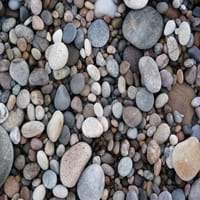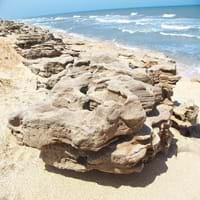Coquina is a sedimentary rock that is composed either wholly or almost entirely of the transported, abraded, and mechanically-sorted fragments of the shells of molluscs, trilobites, brachiopods, or other invertebrates 0
European Foreland Basins 0
From Concha (Latin)+ Coquina(Spanish) +conch(English)= Couquina (mid 19th century) 0
Durable Rock, Soft Rock 0
Coarse Grained Rock, Opaque Rock 0
Layered, Banded, Veined and Shiny 0
Decorative Aggregates, Homes, Hotels, Interior Decoration 0
Garden Decoration, Office Buildings 0
Building houses or walls, Construction Aggregate 0
Artifacts, Monuments, Sculpture, Small Figurines 0
Available in Lots of Colors and Patterns, Is one of the oldest rock 0
Archaeological Significance
0
Coquina is a sedimentary rock which is formed when billions of small clam-like seashell, called Coquina, or cockleshell are die and hence are deposited, buried and turns into a rock when pressure is applied. 0
Apatite, Augite, Bronzite, Calcite, Chert, Chlorite, Clay Minerals, Epidote, Feldspar, Garnet, Micas, Muscovite or Illite 0
CaO, Carbon Dioxide, Iron(III) Oxide, MgO 0
Biological Weathering, Chemical Weathering, Mechanical Weathering 0
Coastal Erosion, Sea Erosion, Water Erosion, Wind Erosion 0
Dull to Vitreous to Submetallic 0
Heat Resistant, Impact Resistant, Pressure Resistant, Wear Resistant 0
Deposits in Eastern Continents
0
Deposits in Western Continents
0
Deposits in Oceania Continent
0
Information about Coquina
Rocks are naturally occurring solids which are composed of minerals & have been used by humans since ages. From Stone Age, rocks are used for various purposes. Also, the metals and minerals found in rock play an important role in our life. Get to know all the Coquina Uses. We have provided you with all information about Coquina rock here. Coquina is a sedimentary rock that is composed either wholly or almost entirely of the transported, abraded, and mechanically-sorted fragments of the shells of molluscs, trilobites, brachiopods, or other invertebrates. Coquina is available in beige, buff, orange colors. The streak of a rock is the color of powder produced when it is dragged across an unweathered surface. The streak of Coquina is white. Get to know more about Coquina rock and characteristics of Coquina rock in the next sections.









